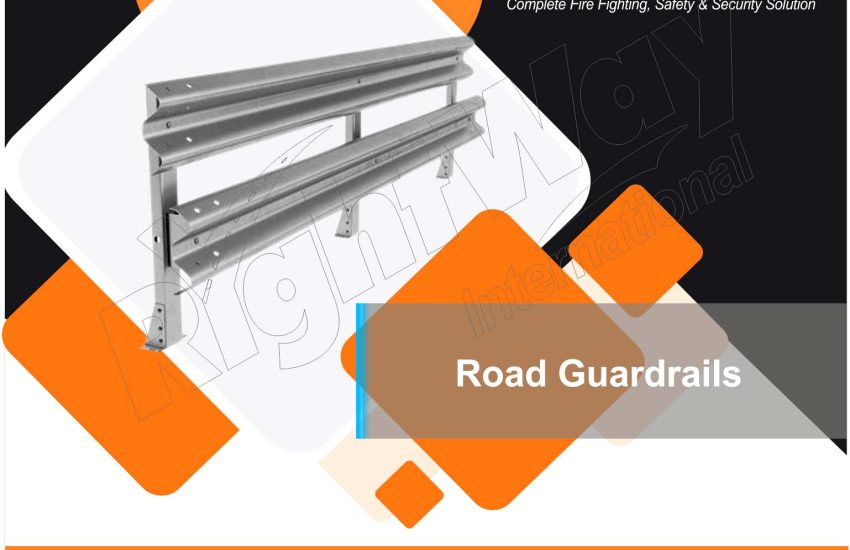Road Guardrails also known as highway barriers or crash barriers, are crucial safety features designed to protect vehicles and occupants from roadside hazards. They help prevent vehicles from veering off the road and can reduce the severity of accidents by absorbing and redirecting the impact of collisions. This article provides an in-depth look at the types, functions, and benefits of road guardrails.
Types of Road Guardrails
- W-Beam Guardrails
- Description: The most common type of guardrail, featuring a continuous wavy beam profile that absorbs and redirects impact.
- Applications: Suitable for highways, rural roads, and various roadways with moderate to high traffic volumes.
- Box Beam Guardrails
- Description: Made from a hollow rectangular section, this design provides a high level of impact resistance.
- Applications: Often used in locations with heavy traffic or where additional strength is required.
- Cable Barrier Systems
- Description: Consist of multiple steel cables strung between posts. These barriers deform upon impact, which helps to slow and redirect the vehicle.
- Applications: Typically used on highways, particularly in areas where a lower-cost solution is preferred.
- Concrete Barriers
- Description: Solid concrete walls or sections that offer substantial protection. They are effective at preventing vehicles from crossing into oncoming traffic or off the road.
- Applications: Used in urban environments, high-speed roads, and locations with high-risk conditions.
- Rigid Barriers
- Description: These barriers are designed with minimal flexibility and are usually made of materials such as steel or concrete.
- Applications: Used in areas where high impact protection is needed, such as on bridges or near pedestrian zones.
- Steel Tube Guardrails
- Description: Composed of steel tubes or pipes, these barriers are designed to withstand substantial impacts and provide effective protection.
- Applications: Often found on roads with heavy traffic or in areas where higher impact resistance is necessary.
- Crash Cushions and Impact Attenuates
- Description: Devices placed at the end of guardrails or along highways to absorb and dissipate the energy from collisions, reducing the severity of impacts.
- Applications: Used at the ends of guardrails, bridges, and in areas where vehicles might collide with fixed objects.
Functions of Road Guardrails
- Vehicle Redirection
- Function: Redirect vehicles that have lost control back onto the roadway or away from hazardous areas, such as steep embankments or oncoming traffic.
- Impact Absorption
- Function: Absorb and distribute the force of an impact to reduce the severity of crashes and protect vehicle occupants.
- Crash Prevention
- Function: Prevent vehicles from colliding with fixed objects, such as trees, utility poles, or barriers separating different traffic lanes.
- Safety Enhancement
- Function: Improve overall road safety by providing a physical barrier that minimizes the risk of severe accidents.
Benefits of Road Guardrails
- Enhanced Safety
- Benefit: Reduces the likelihood of vehicles veering off the road and minimizes the impact of collisions, thus improving driver and passenger safety.
- Accident Reduction
- Benefit: Helps to decrease the frequency and severity of accidents by redirecting vehicles and absorbing impact forces.
- Cost-Effective Solution
- Benefit: Provides a relatively affordable method for improving road safety compared to other solutions like road redesign or major construction projects.
- Maintenance and Durability
- Benefit: Made from durable materials, road guardrails are designed to withstand harsh weather conditions and require minimal maintenance.
Installation and Maintenance
- Installation
- Considerations: Proper installation is crucial for effective performance. Guardrails should be installed according to safety standards and guidelines, taking into account factors such as traffic volume, road conditions, and environmental conditions.
- Maintenance
- Considerations: Regular inspections and maintenance are necessary to ensure guardrails remain in good condition. This includes checking for damage, rust, or wear and making necessary repairs or replacements.
Conclusion
Road guardrails are an essential component of road safety infrastructure, providing crucial protection against accidents and minimizing the risk of severe injuries. By understanding the different types, functions, and benefits of guardrails, road safety professionals, planners, and engineers can make informed decisions to enhance safety on roadways. Their effective design and installation are key to maintaining a safe driving environment and reducing the impact of road accidents.


